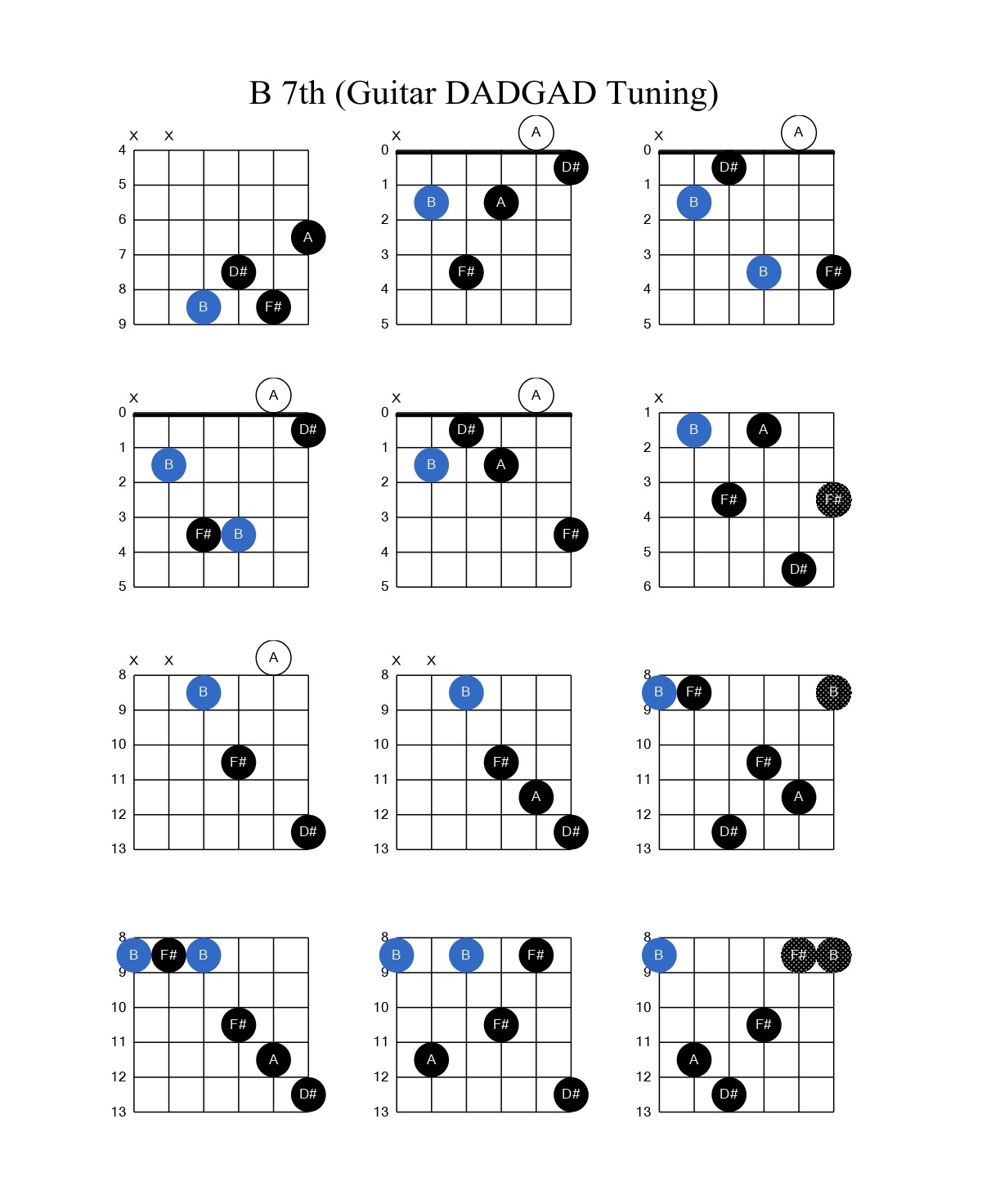The B7 chord is a cornerstone of countless guitar songs, adding a jazzy, bluesy flavor to your playing. But for beginners, it can feel like a hand-cramping monstrosity. Fear not, fellow fret-wranglers! This guide will break down the B7 chord into bite-sized pieces, helping you conquer this essential musical tool.
Understanding the Beast:
The B7 chord, like any chord, is a combination of notes played simultaneously. In this case, the B7 consists of four notes:
- B (root note): This sets the foundation of the chord and gives it its name.
- D# (major third): Adds a slightly bright, open character.
- F# (perfect fifth): Completes the basic triad structure of the chord.
- A (minor seventh): This is the key ingredient that makes it a B7, adding a dominant, bluesy tension that resolves beautifully to other chords.
Taming the Fingers:
There are several ways to play the B7 on guitar, each with its own advantages and challenges. Here are the three most common fingerings:
1. Open Position:
- This is the most beginner-friendly option, using all open strings except the E.
- Place your fingers as follows:
- Index finger: 1st fret, D string (4th)
- Middle finger: 2nd fret, A string (5th)
- Ring finger: 2nd fret, G string (3rd)
- Pinky finger: 2nd fret, E string (1st)
2. Barre Chord:
- This version involves barring three strings with your first finger, making it slightly trickier but offering a cleaner sound.
- Place your first finger across the 2nd fret on the A, D, and G strings.
- Add your third finger on the 3rd fret, F# string (5th), and pinky finger on the 3rd fret, D# string (4th).
3. Voicing Variations:
- As you progress, explore different voicings of the B7 chord that offer unique tonal variations.
- Experiment with higher frets and open strings to find voicings that suit your playing style and the specific song you’re working on.
Tips for Success:
- Practice slowly and focus on clean finger placement. Don’t rush; muscle memory takes time to build.
- Mute any unwanted strings with the side of your fingers. This avoids muddy-sounding chords.
- Use a metronome to develop consistent strumming patterns. This will help you integrate the B7 smoothly into your playing.
- Listen to music that features the B7 chord. Pay attention to how other guitarists use it and draw inspiration for your own playing.
Remember: Mastering the B7 chord is a journey, not a destination. Be patient, practice consistently, and most importantly, have fun exploring the vast musical possibilities it unlocks!
Beyond the Basics:
Once you’ve got the hang of the basic B7 voicings, delve deeper into its theoretical and practical applications:
- Learn how the B7 functions in different keys and chord progressions. This will help you understand its role in creating musical tension and release.
- Experiment with different strumming patterns and picking techniques to add rhythmic depth and texture to your playing.
- Explore how the B7 can be used for soloing and improvisation. Its dominant nature makes it a springboard for creating bluesy, jazzy melodies.
With dedication and a playful spirit, the B7 chord will become a powerful tool in your musical arsenal. So grab your guitar, strum this bluesy beast, and conquer the fretboard one note at a time!
Bonus Resources:
- Check out online tutorials and video demonstrations of the B7 chord for visual guidance.
- Invest in a guitar chord chart or app for quick reference to different chord shapes and voicings.
- Join online guitar communities or forums to connect with other guitarists and share your B7-conquering journey!
Remember, the most important thing is to enjoy the process of learning and growing as a musician. So keep strumming, keep learning, and keep rocking out!
- How to Learn Guitar Licks – 10 Beginner Tips
- How to Learn Guitar at Home without Teacher
- Simple Chord Progression in the key of C Major using the Em, C, G, and D Chords
